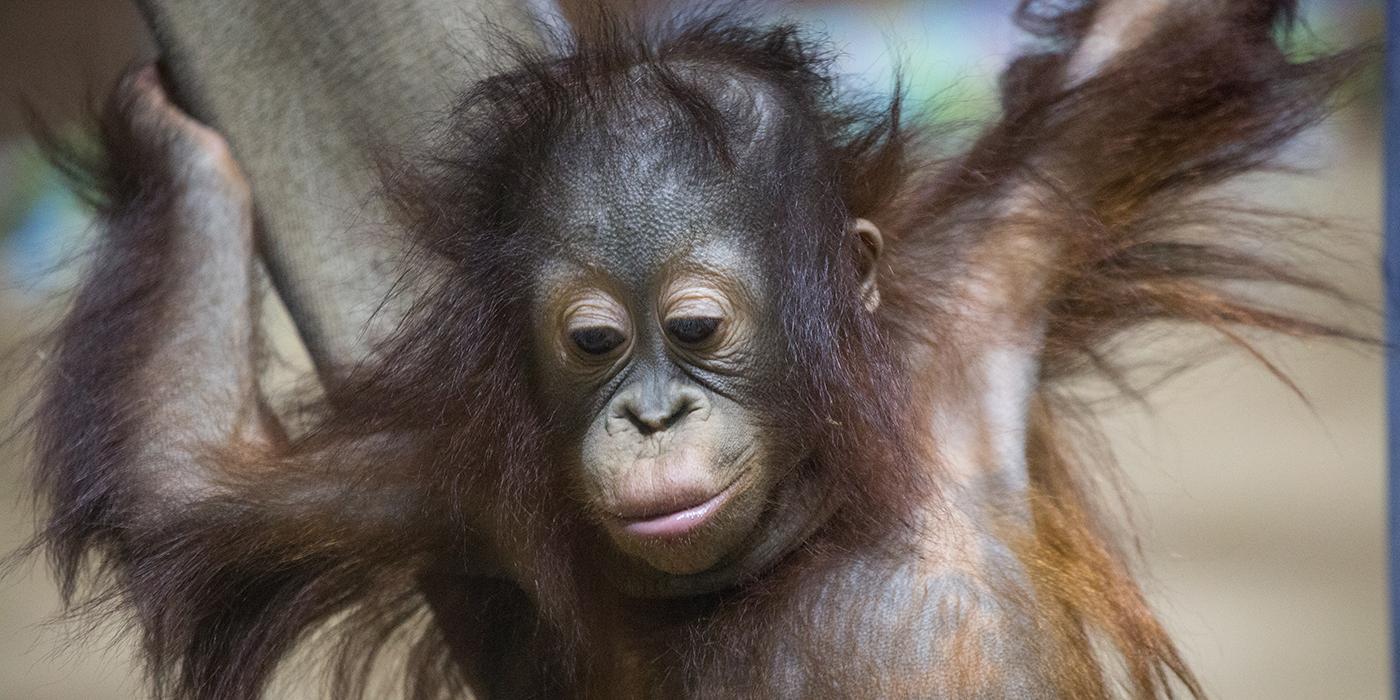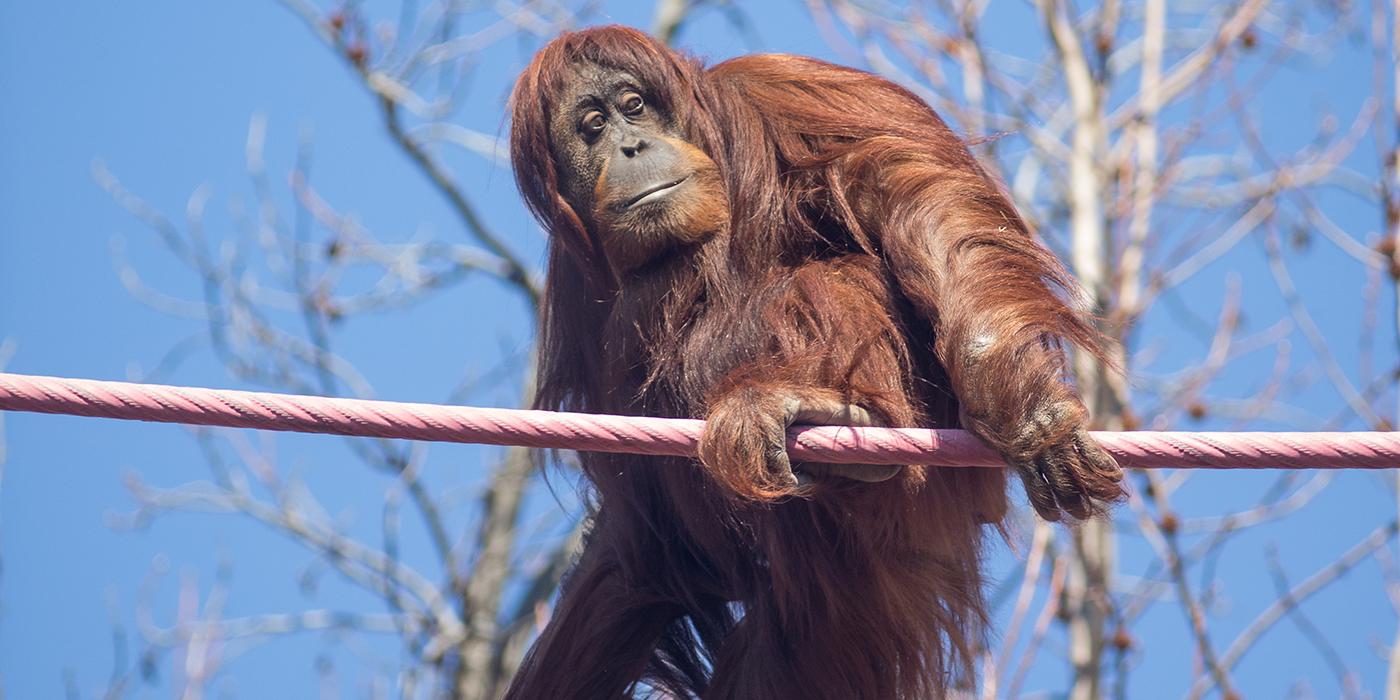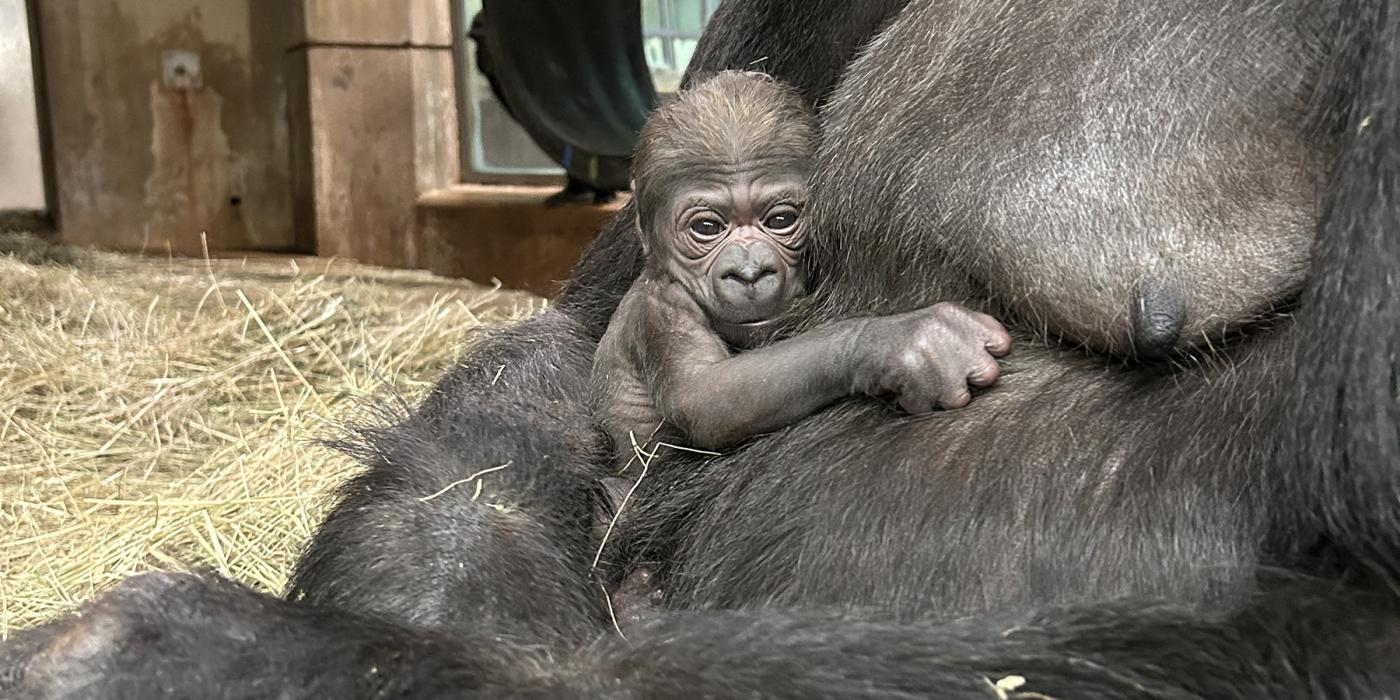Are Orangutans Monkeys? And Other Orangutan Facts
You asked the internet, we answered.
Did you know that orangutan means “person of the forest” in Indonesian and Malaysian language? Native to the forests of Borneo and Sumatra, orangutans are the world’s largest arboreal, or tree-dwelling, mammals. Today, we are answering some of the most-searched questions about these critically endangered “red apes.”
Why do orangutans have big faces?
Not all orangutans have large faces, but some fully mature males develop big cheek pads, also known as flanges. Some females may consider the presence of cheek pads when selecting a mate. Paired with a large throat pouch, flanges amplify an orangutan’s loud, long call—a vocalization typically used for long-distance communication.
Are orangutans monkeys?
Orangutans—along with bonobos, chimpanzees, gorillas and humans—are great apes, not monkeys! Apes are usually larger than monkeys, and have long arms and short bodies. You can see tails on most monkeys, but you will not see an externally visible tail on any apes.
Why are orangutans solitary?
A better question would actually be: why are orangutans more solitary than other great apes? Orangutans’ social structure is tied to the distribution of food within their habitat. Though they live semi-solitary lives in the wild, orangutans are highly social tolerant. Female orangutans have complex social networks, and adult orangutans often come together to feed in the same food patch during times of fruit abundance. When food is scarcer, orangutans form parties less often.
Adult female orangutans travel with their offspring, who are dependent on their mothers for at least six to seven years. And while orangutans do not live in tight social groups like African apes, they know and interact with other orangutans within their range. Adult males typically travel alone but may form a consortship, or partnership, with a female to mate, traveling with her for a few days or sometimes several weeks.
How do orangutans get their food?
Orangutans have cognitive maps and often return to the same feeding sites they have visited in the past to forage for fruit, insects and flowers. When fruit is scarce, they eat the inner bark of trees, leaves and other vegetation. They will also opportunistically eat bird eggs and small mammals, such as slow loris and rats. Mothers teach their infants what to eat and where to find food.
Where do orangutans get their water?
Water can be obtained from a variety of sources, including tree holes, leaves filled with rainwater and from fruits. Orangutans in some populations also chew leaves to make a pulpy sponge that can soak up hard-to-reach water. And their innovation is not limited to hydration. Some wild orangutans have also been observed using sticks to break open fruit or search for honey.
How do orangutans walk?
Orangutans’ strong, long arms make them well suited for life in the trees, where they climb, walk, tree sway and brachiate (swing hand over hand across branches like gibbons) to get around. Their primary form of locomotion, moving fairly carefully between trees, is called arboreal clambering. Orangutans do occasionally travel on the ground—more often in Borneo where there are fewer ground-dwelling predators than in Sumatra.
Learn more about orangutans, and be sure to stop by Great Ape House during your next visit to the Smithsonian’s National Zoo’s to see orangutans Kiko, Kyle, Bonnie, Iris, Lucy, Batang, Lucy and infant Redd.
Related Species:





